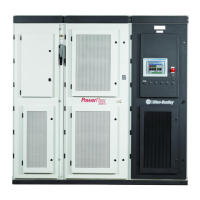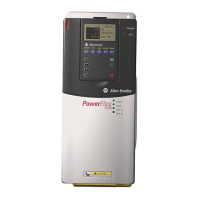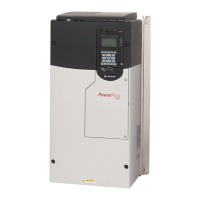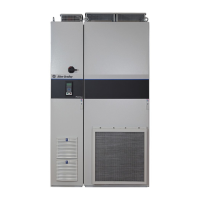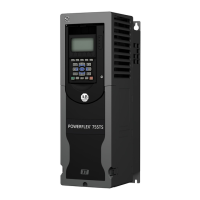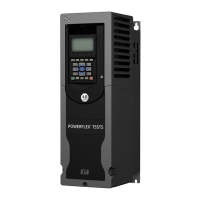1-8 Functional Description
7000-TD002A-EN-P – September 2007
Flux Control The function of the flux control block (Figure 1.5) is to determine the
magnetizing component (I
sd
) of the stator current (I
s
) needed to
maintain the desired flux profile in the motor. The inputs are Flux
Feedback (306) and Stator Freq (448) from the motor model, Speed
Feedback (289) and Torque Reference (291) from the speed control
block and the measured voltage at the input of the rectifier, Rec
Input Volt (696).
The Flux Feedback is subtracted from the Flux Reference (305) to
determine the Flux Error (307), which is the input to the flux PI
regulator. The gains are determined from desired Flxreg Bandwidth
(97) and motor parameters T Rotor (132) and Lm Rated (131). The
output of the flux regulator is FluxCurRegulator (309). An open loop
estimate of the magnetizing current FluxCur Feedfwd (308) is
determined by dividing the Flux Reference by parameter Lm Rated.
FluxCur Feedfwd and FluxCurRegulator are added to produce Mtr
Flux CurCmd (310) which is the magnetizing component of the
stator current command. To calculate the magnetizing current
supplied by the inverter Inv Flux CurCmd (312), the current supplied
by the motor filter capacitor in magnetizing is calculated and
subtracted from Mtr Flux CurCmd. It should be noted that as the
motor speed increases, Inv Flux CurCmd decreases. This is because
as the motor voltage increases more of the magnetizing current
requirement of the motor is met by the capacitor. At resonant point,
Inv Flux CurCmd is nearly zero and becomes negative at speeds
above resonance. InvTorque CurCmd (from Speed Control block)
and Inv Flux CurCmd are then passed to the Current Control block to
determine the dc link current reference (Idc Reference) and the firing
angles of the two converters (Alpha Rectifier and Alpha Inverter).
The flux profile in the drive is adjusted by the parameters Flx Cmd
No Load (103) and FlxCmd RatedLoad (100). Using these
parameters, Flux Reference is adjusted linearly with the desired
Torque Reference. At light loads motor flux is decreased allowing
reduction in losses while full flux is produced at rated load. The
maximum flux reference is limited to Flux Cmd Limit (623). This
limit is dependent on the Rec Input Volt
and the motor speed (Speed
Feedback). If the drive operates at reduced line voltage, then Flux
Reference is reduced. Also if the motor is running above the Base
Speed, the flux profile is made inversely proportional to the speed of
the motor resulting in the field weakening or the constant power
mode of operation of the drive. This is accompanied by a decrease in
the motor torque capability.
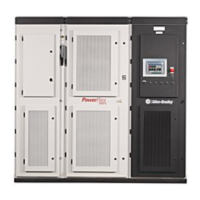
